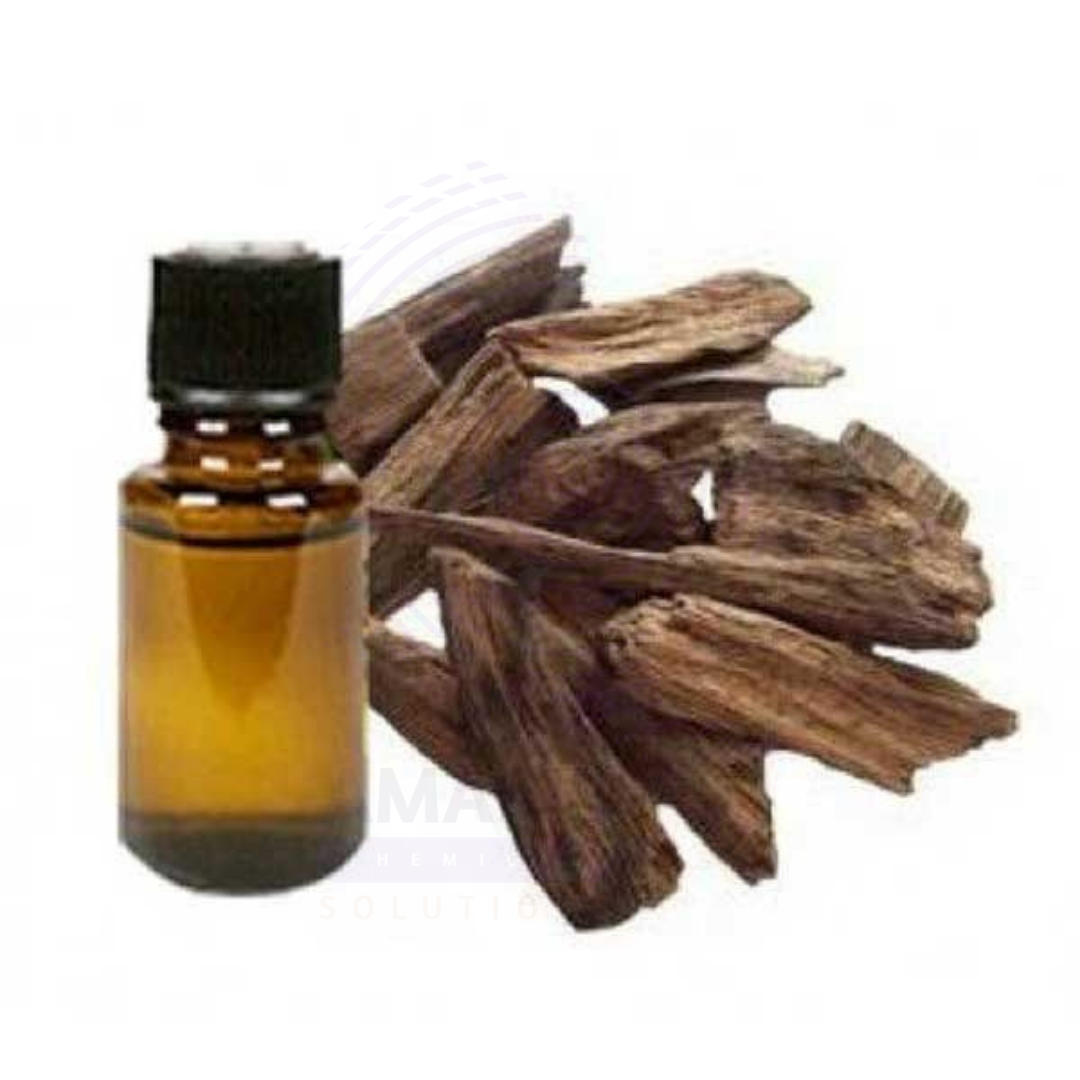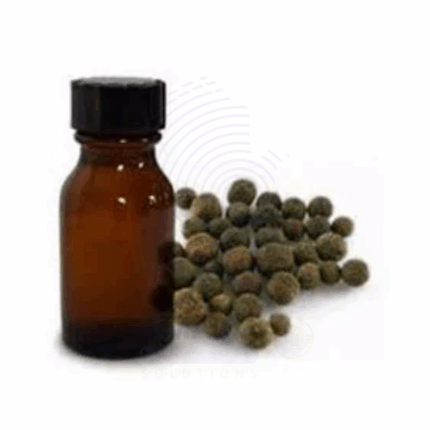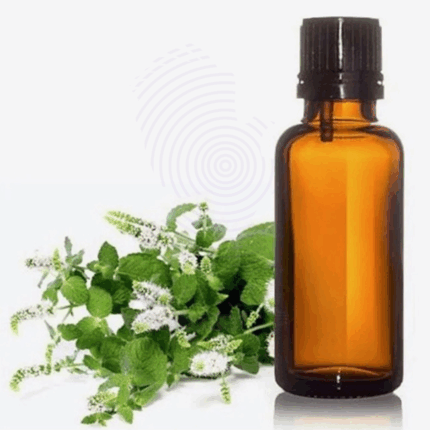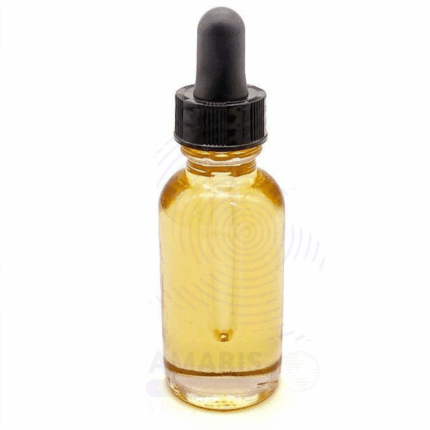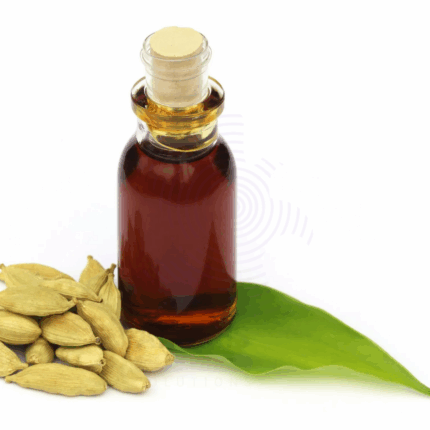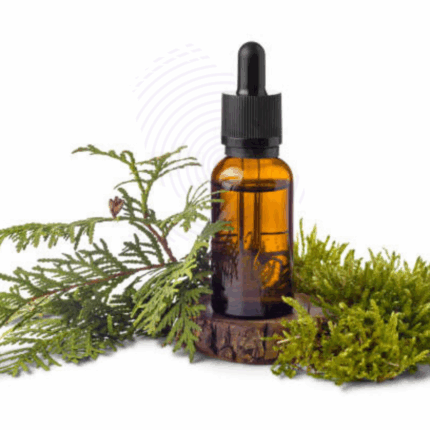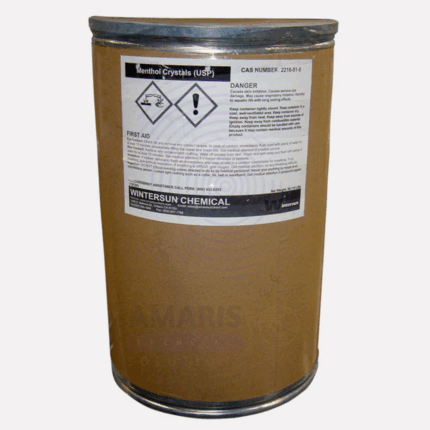
Agarwood oil
Agarwood oil, also known as Oudh Oil, is a rare and luxurious essential oil derived from the heartwood of the Aquilaria tree, primarily found in Southeast Asia. This dark, viscous oil is extracted through steam distillation of infected wood—formed when the tree produces a dark, aromatic resin in response to fungal attack. The resulting oil is one of the most precious and complex natural fragrances in the world, known for its deep, woody, smoky, and slightly sweet aroma.
Agarwood Oil is widely revered in perfumery, spiritual rituals, and traditional medicine. Its rich olfactory profile and fixative qualities make it an indispensable ingredient in high-end perfumes and incense. Additionally, it is used in skin care, wellness therapies, and emotional balancing practices due to its grounding, calming, and meditative effects. Agarwood Oil is produced in extremely limited quantities, which adds to its exclusivity and value.
Agarwood oil
Primary Uses
- Perfumery and Fragrance Industry
- Used as a base note in luxury perfumes and attars due to its complex, long-lasting aroma.
- Blended with floral, spicy, or woody accords to enhance depth and richness.
- Acts as a natural fixative, anchoring lighter aromatic components in high-end fragrance formulations.
- Featured in niche perfumery for creating oriental, woody, and resinous scent profiles.
- Commonly used in traditional Arabian and Indian perfumery, especially in oil-based applications.
- Aromatherapy & Wellness
- Used in meditation and mindfulness practices for its grounding and centering properties.
- Diffused or applied (diluted) to promote calmness, reduce stress, and enhance emotional clarity.
- Included in spiritual and ritualistic blends to support inner peace and focus.
- Sometimes used in chakra balancing and energy-clearing oil formulas.
- Promotes deep relaxation and sleep in therapeutic oil blends.
- Cosmetics and Personal Care
- Added to premium creams, balms, and serums for its fragrance and reputed skin-nourishing properties.
- Used in artisanal soaps and bath oils for a luxurious, exotic scent experience.
- Featured in beard oils, body oils, and men’s grooming products for its deep, masculine aroma.
- Used in high-end facial oils and elixirs for calming, grounding skin effects.
- Traditional and Alternative Medicine
- Historically used in Ayurvedic and Traditional Chinese Medicine for calming the nervous system.
- Occasionally used in topical applications for soothing inflammation or minor pain (highly diluted).
- Employed in ceremonial and healing blends for energetic balance and purification.
Secondary Uses
- Incense and Spiritual Use
- Burned as high-grade incense in religious ceremonies and sacred rituals across cultures.
- Incorporated in temple offerings and home rituals to purify space and elevate consciousness.
- Used in meditation rooms and yoga studios to enhance spiritual ambience.
- High-Value Candle and Ambient Products
- Used in luxury scented candles for an elegant, meditative atmosphere.
- Added to ambient scent diffusers and oil burners for exotic home fragrance.
- Blended with sandalwood, frankincense, and rose for premium ambient compositions.
- High-End Artisan Craft
- Occasionally used in fine handmade products like natural deodorants, hair oils, and personal attars.
- Incorporated into oil-infused jewelry and artisanal woodworks for both scent and symbolism.
| PACK SIZE |
5kg |
|---|
1. Basic Identification Attributes
- Botanical Name: Aquilaria malaccensis (and related Aquilaria species)
- Common/Trade Name: Agarwood Oil / Oudh Oil
- INCI Name: Aquilaria Malaccensis Oil
- CAS Number: 94350-09-1
- HS Code: 3301.29
- Synonyms: Oudh, Aloeswood Oil, Eaglewood Oil, Oud Oil
2. Physical & Chemical Properties
- Physical State: Thick, viscous essential oil
- Color & Odor: Dark brown to amber; deep, woody, balsamic, smoky aroma
- Solubility: Insoluble in water; soluble in alcohol and oils
- Refractive Index: 1.510 – 1.560
- Specific Gravity: 0.920 – 1.000
- Main Components: Sesquiterpenes, agarospirol, jinkoh-eremol, benzylacetone (varies by origin and age)
3. Safety & Hazard Attributes
- GHS Classification: Not classified as hazardous in typical use concentrations
- Toxicity: Low toxicity; safe for topical and aromatic use when diluted properly
- Exposure Limits: No known occupational exposure limits
- Allergen Information: Generally well tolerated; test for skin sensitivity before use
4. Storage & Handling Attributes
- Storage Conditions: Store in a tightly sealed container in a cool, dry place away from sunlight
- Container Type: Amber glass bottles or stainless steel drums
- Shelf Life: 36+ months under proper storage conditions (improves with age)
- Handling Precautions: Handle with clean, dry instruments to maintain purity
5. Regulatory & Compliance Attributes
- CITES-regulated (export requires certification due to protected status of Aquilaria species)
- Manufactured in compliance with IFRA guidelines for fragrance use
- Produced in GMP-certified facilities
- Not classified as hazardous under international transport regulations
6. Environmental & Health Impact
- Biodegradability: Biodegradable in the environment
- Ecotoxicity: Low environmental toxicity when used as intended
- Bioaccumulation: Not bioaccumulative
- Sustainability Notes: Ethically sourced oils must be certified to ensure sustainable harvesting
Safety Handling Precautions
- PPE Required: Gloves and goggles recommended in industrial handling
- Handling Guidelines: Use clean, dry utensils and avoid contamination from water or other oils
First Aid Measures
- Inhalation: Move to fresh air if any irritation occurs; seek help if symptoms persist
- Skin Contact: Rinse with soap and water; discontinue use if irritation appears
- Eye Contact: Rinse thoroughly with water; seek medical help if irritation continues
- Ingestion: Not for internal use; seek medical assistance if accidentally swallowed
Firefighting Measures
- Fire Hazards: Combustible in high concentrations
- Extinguishing Media: Foam, CO₂, dry chemical, or water spray
- Special Precautions: Use self-contained breathing apparatus and protective gear
- Hazardous Combustion Products: Carbon monoxide, carbon dioxide, aromatic smoke


 Preservatives(food)
Preservatives(food) Flavor Enhancers
Flavor Enhancers Acidulants
Acidulants Sweeteners
Sweeteners Antioxidants
Antioxidants Colorants(food)
Colorants(food) Nutraceutical Ingredients (food)
Nutraceutical Ingredients (food) Nutrient Supplements
Nutrient Supplements Emulsifiers
Emulsifiers
 Collectors
Collectors Dust Suppressants
Dust Suppressants Explosives and Blasting Agents
Explosives and Blasting Agents Flocculants and Coagulants
Flocculants and Coagulants Frothers
Frothers Leaching Agents
Leaching Agents pH Modifiers
pH Modifiers Precious Metal Extraction Agents
Precious Metal Extraction Agents
 Antioxidants(plastic)
Antioxidants(plastic) Colorants (Pigments, Dyes)
Colorants (Pigments, Dyes) Fillers and Reinforcements
Fillers and Reinforcements Flame Retardants
Flame Retardants Monomers
Monomers Plasticizers
Plasticizers Polymerization Initiators
Polymerization Initiators Stabilizers (UV, Heat)
Stabilizers (UV, Heat)
 Antifoaming Agents
Antifoaming Agents Chelating Agents
Chelating Agents Coagulants and Flocculants
Coagulants and Flocculants Corrosion Inhibitors
Corrosion Inhibitors Disinfectants and Biocides
Disinfectants and Biocides Oxidizing Agents
Oxidizing Agents pH Adjusters
pH Adjusters Scale Inhibitors( water)
Scale Inhibitors( water)
 Antioxidants(cosmetic)
Antioxidants(cosmetic) Emollients
Emollients Fragrances and Essential Oils
Fragrances and Essential Oils Humectants
Humectants Preservatives
Preservatives Surfactants(cosmetic)
Surfactants(cosmetic) Thickeners
Thickeners UV Filters
UV Filters
 Fertilizers
Fertilizers Soil Conditioners
Soil Conditioners Plant Growth Regulators
Plant Growth Regulators Animal Feed Additives
Animal Feed Additives Biostimulants
Biostimulants Pesticides (Herbicides, Insecticides, Fungicides)
Pesticides (Herbicides, Insecticides, Fungicides)
 Active Pharmaceutical Ingredients (APIs)
Active Pharmaceutical Ingredients (APIs) Excipients
Excipients Solvents(pharmaceutical)
Solvents(pharmaceutical) Antibiotics
Antibiotics Antiseptics and Disinfectants
Antiseptics and Disinfectants Vaccine Adjuvants
Vaccine Adjuvants Nutraceutical Ingredients (pharmaceutical)
Nutraceutical Ingredients (pharmaceutical) Analgesics & Antipyretics
Analgesics & Antipyretics
 Analytical Reagents
Analytical Reagents Solvents(lab)
Solvents(lab) Chromatography Chemicals
Chromatography Chemicals Spectroscopy Reagents
Spectroscopy Reagents microbiology-and-cell-culture-reagents
microbiology-and-cell-culture-reagents Molecular Biology Reagents
Molecular Biology Reagents Biochemical Reagents
Biochemical Reagents Inorganic and Organic Standards
Inorganic and Organic Standards Laboratory Safety Chemicals
Laboratory Safety Chemicals Specialty Laboratory Chemicals(Special Laboratory Equipment)
Specialty Laboratory Chemicals(Special Laboratory Equipment)
 Demulsifiers
Demulsifiers Hydraulic Fracturing Fluids
Hydraulic Fracturing Fluids Scale Inhibitors(oil)
Scale Inhibitors(oil) Surfactants(oil)
Surfactants(oil) Drilling Fluids
Drilling Fluids
 Dyes and Pigments
Dyes and Pigments Bleaching Agents
Bleaching Agents Softening Agents
Softening Agents Finishing Agents
Finishing Agents Antistatic Agents
Antistatic Agents
 Admixtures
Admixtures Waterproofing Agents
Waterproofing Agents Sealants and Adhesives
Sealants and Adhesives Curing Compounds
Curing Compounds Concrete Repair Chemicals
Concrete Repair Chemicals Anti-Corrosion Coatings
Anti-Corrosion Coatings
 Surfactants(cleaning)
Surfactants(cleaning) Builders
Builders Enzymes
Enzymes Solvents (Cleaning)
Solvents (Cleaning) Fragrances
Fragrances
 Electronic Chemicals
Electronic Chemicals Catalysts
Catalysts Lubricants
Lubricants Photographic Chemicals
Photographic Chemicals Refrigerants
Refrigerants Automotive chemicals
Automotive chemicals Pyrotechnic Chemicals
Pyrotechnic Chemicals
 Biodegradable Surfactants
Biodegradable Surfactants Bio-based Solvents
Bio-based Solvents Renewable Polymers
Renewable Polymers Carbon Capture Chemicals
Carbon Capture Chemicals Wastewater Treatment Chemicals
Wastewater Treatment Chemicals
 Pigments
Pigments Solvents(paint)
Solvents(paint) Specialty Coatings
Specialty Coatings Binders/Resins
Binders/Resins Additives
Additives Driers
Driers Anti-Corrosion Agents
Anti-Corrosion Agents Functional Coatings
Functional Coatings Application-Specific Coatings
Application-Specific Coatings
 Fresh Herbs
Fresh Herbs Ground Spices
Ground Spices Whole Spices
Whole Spices Spice Blends
Spice Blends Dried Herbs
Dried Herbs
 Leavening Agents
Leavening Agents Dough Conditioners
Dough Conditioners Flour Treatments
Flour Treatments Fat Replacers
Fat Replacers Decoratives
Decoratives Preservatives(baking)
Preservatives(baking)
 Plasticizers & Softeners
Plasticizers & Softeners Reinforcing Agents
Reinforcing Agents Adhesion Promoters
Adhesion Promoters Vulcanizing Agents
Vulcanizing Agents Antidegradants
Antidegradants Blowing Agents
Blowing Agents Fillers & Extenders
Fillers & Extenders Accelerators & Retarders
Accelerators & Retarders